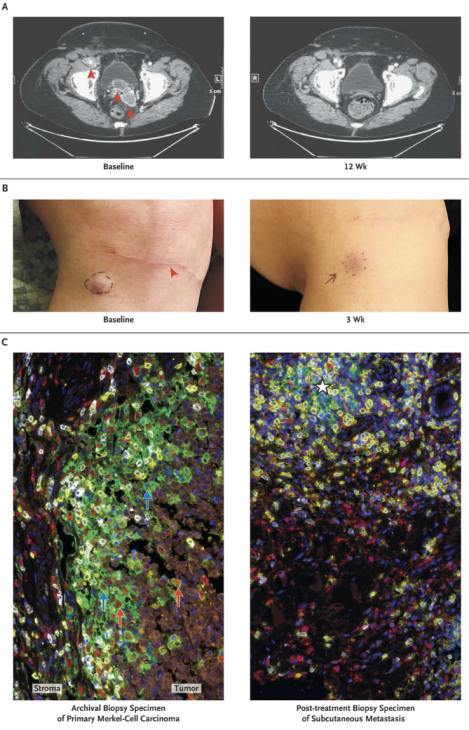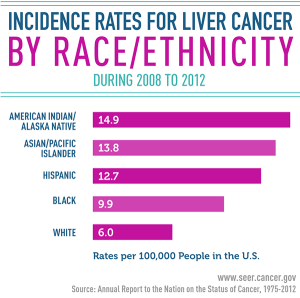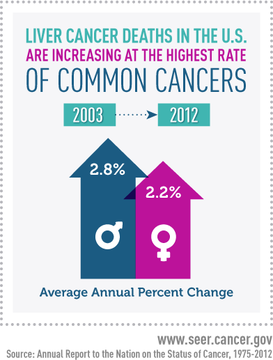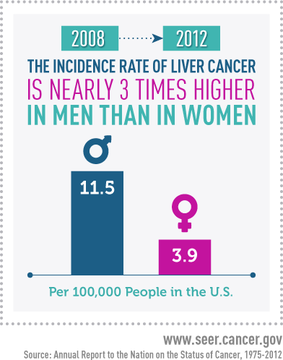
April 19, 2016
KEYTRUDA is a medicine that contains the humanized antibody pembrolizumab and it treats cancer types such as melanoma and lung cancer by working with the immune system. A new study showed that more than half of the patients responded to a rare but aggressive form of skin cancer known as Merkel cell carcinoma.
It was a small clinical trial in which 26 patients were given the treatment with pembrolizumab and the objective response rate among the 25 patients who could be evaluated was 56%. 4 patients showed complete response and 10 patients had a partial response.
About 80 percent of Merkel cell carcinoma are caused by the viral infection by Merkel cell polyomavirus (MCPyV). This study is very important as it demonstrates that virus-driven cancers may be treated with immunotherapy. Merkel cell carcinoma may also be caused by the exposure to ultraviolet radiation from the sun. Merkel cell carcinoma is more aggressive than melanoma and is several times more lethal.
Right now there’s no drug approved for Merkel cell carcinoma but this study has shed a light on the new action of pembrolizumab, more studies and evidence are required for the better understanding of important questions, such as how long patients should be treated after responding, which patients are most likely to respond to immunotherapy, whether other virus-associated cancers can be treated with immunotherapy. These are some open questions that require more research and findings.
This study was funded by the National Cancer Institute and Merck.
Reference:
PD-1 Blockade with Pembrolizumab in Advanced Merkel-Cell Carcinoma
Paul T. Nghiem, M.D., Ph.D., Shailender Bhatia, M.D., Evan J. Lipson, M.D., Ragini R. Kudchadkar, M.D., Natalie J. Miller, B.A., Lakshmanan Annamalai, D.V.M., Ph.D, Sneha Berry, M.S., Elliot K. Chartash, M.D., Adil Daud, M.B., B.S., Steven P. Fling, Ph.D., Philip A. Friedlander, M.D., Harriet M. Kluger, M.D., Holbrook E. Kohrt, M.D., Ph.D., Lisa Lundgren, M.S., Kim Margolin, M.D., Alan Mitchell, M.Sc., Thomas Olencki, D.O., Drew M. Pardoll, M.D., Ph.D., Sunil A. Reddy, M.D., Erica M. Shantha, M.D., William H. Sharfman, M.D., Elad Sharon, M.D., M.P.H., Lynn R. Shemanski, Ph.D., Michi M. Shinohara, M.D., Joel C. Sunshine, M.D., Ph.D., Janis M. Taube, M.D., John A. Thompson, M.D., Steven M. Townson, Ph.D., Jennifer H. Yearley, D.V.M., Ph.D., Suzanne L. Topalian, M.D., and Martin A. Cheever, M.D.
April 19, 2016 DOI: 10.1056/NEJMoa1603702



 Taking into account the non-Hispanic whites, non-Hispanic blacks, as well as Hispanic men and women, the incidences of liver cancer in people born between the years 1938-1947 were increased. Men belonging to the Hispanic and non-Hispanic racial groups have the lowest median age at death due to liver cancer, that is, 60 years and 62 years respectively. They also have the greatest median person-years of life lost per death rate due to the same disease, that is, 21 years and 20 years respectively.
Taking into account the non-Hispanic whites, non-Hispanic blacks, as well as Hispanic men and women, the incidences of liver cancer in people born between the years 1938-1947 were increased. Men belonging to the Hispanic and non-Hispanic racial groups have the lowest median age at death due to liver cancer, that is, 60 years and 62 years respectively. They also have the greatest median person-years of life lost per death rate due to the same disease, that is, 21 years and 20 years respectively.
 Hence, by assessing the study results, it has been concluded that the overall incidences of cancer of all types, as well as deaths related to cancer has declined significantly. However, the burden of liver cancer and intra-hepatic bile duct cancer is increasing, and is not equally distributed among the affected individuals. Moreover, statistics claim that there is a greater misfortune of this disease in the male population of the United States. Men are three times more likely to be affected as compared to the female population.
Hence, by assessing the study results, it has been concluded that the overall incidences of cancer of all types, as well as deaths related to cancer has declined significantly. However, the burden of liver cancer and intra-hepatic bile duct cancer is increasing, and is not equally distributed among the affected individuals. Moreover, statistics claim that there is a greater misfortune of this disease in the male population of the United States. Men are three times more likely to be affected as compared to the female population.